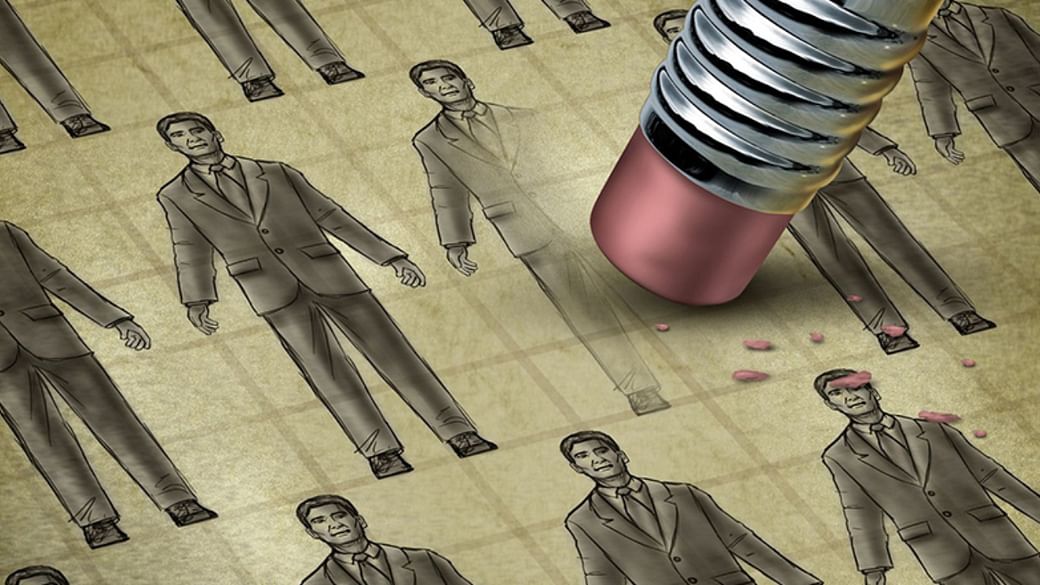
New Delhi- While the wealth of nation’s top 100 billionaires increased by Rs 12.97 lakh crore since March 2020, about 1.7 lakh people lost their jobs every hour in April 2020 alone.
Oxfam India’s CEO Amitabh Behar says, “To contextualise the inequity in what is the biggest economic crisis in the history of independent India, the wealth of the nation’s top 100 billionaires went up by Rs 12,97,822 crores since March 2020, while in April alone over 170,000 people lost their jobs every hour. Just this increase in wealth could sustain the NREGA wages (National Rural Employment Guarantee Act) for 10 years!”
Behar says that over 40-50 million seasonal migrants working in construction sites, factory manufacturing units and services activities were left to fend for themselves during the 2020 lockdown.
“While affluent Indians stranded abroad were flown back and quarantined in hotels, it was only at the end of May 2020, that buses and Shramik special trains were arranged for the relocation of migrant workers,” he said.
The India edition of Oxfam’s newly released report ‘The Inequality Virus,’ elucidates how amid spiralling unemployment, dire food insecurity, distress migration as well as reverse migration, the super-rich elite continued to amass wealth while billions struggled to make ends meet.
The findings in “Inequality Virus’ reports say that the pandemic has hit India’s informal workers the most. Out of a total 122 million who lost their jobs, 75 percent, which accounts for 92 million jobs, were lost in the informal sector.
During the mass exodus on foot, over 300 informal workers died from starvation, suicides, exhaustion, road and rail accidents, police brutality and denial of timely medical care.
According to a Stranded Workers Action Network’s report in April, 2020, 50 percent of the respondents had no rations left even for a single day; while 96 percent had not received rations, 70 percent had not received cooked food from the government; and 78 percent of the respondents had less than INR 300 left.
The National Human Rights Commission recorded over 2582 cases of human rights violation as early as in the month of April 2020.
As per the findings,the relief packages for the informal sector and migrant workers were also minuscule. Additional expenditure of the government in the first relief package announced was only 0.5 percent of the GDP and the total additional public spending promised by all the relief measures announced by the end of May 2020 amounted to only around 1 percent of the GDP.
The report found that the brunt of job loss was experienced by the female workforce and 17 million women lost their jobs just in April 2020.
Unemployment for women rose by 15 percent from a pre-lockdown level of 18 percent and could result in a loss to India’s GDP of about 8 percent or $ 218 billion.
Women who were employed before the lockdown are also 23.5 percentage points less likely to be re-employed compared to men in the post-lockdown phase.
A study reports that despite having a hold of 77 million tonnes of food grain, more than three times the buffer stock requirement before the lockdown, only 2.2 million tonnes of this had been distributed to states. Eventually, public stocks increased to more than 100 million tonnes by the beginning of June 2020, which meant that some of the stock effectively rotted in the storage facilities.
Moreover, what was announced through the PDS system and fair price shops were not applicable for most of the migrants outside their home town due to sedentary bias that makes ration cards made in the source state of the migrants unusable in the destination state, the report said.
Follow this link to join our WhatsApp group: Join Now
Be Part of Quality Journalism |
Quality journalism takes a lot of time, money and hard work to produce and despite all the hardships we still do it. Our reporters and editors are working overtime in Kashmir and beyond to cover what you care about, break big stories, and expose injustices that can change lives. Today more people are reading Kashmir Observer than ever, but only a handful are paying while advertising revenues are falling fast. |
| ACT NOW |
| MONTHLY | Rs 100 | |
| YEARLY | Rs 1000 | |
| LIFETIME | Rs 10000 | |










